Despite being very fond of my Leitz lenses, there’s always something exciting about picking up a lesser-known third-party lens. With little to no information available online it’s always a risk, but if the price is right it’s often worth it. The great thing about longer lenses, especially those slower ones, is they don’t need a complex design to deliver decent image quality. And a large aperture is not necessary to allow for a shallow DoF and subject separation. So how bad can it be?
Background
PAM stands for Photographic Arts Mfg. which formed in New York right after the war in 1946. At the time it was difficult to import camera equipment from Germany into the US so American companies stepped in to try and fill this gap. One of the resulting products was the Britar 105mm f/4.5 lens released in 1950. PAM was renamed to Starr Corporation in 1951 so it is very likely the Britar was only made for a very short period of time. They seem to have never made another lens.
The camera often mentioned alongside this lens is the Kardon 35mm Leica copy rangefinder made in the US, nowadays a relatively scarce and pricey one. There is however no evidence that the Britar lens was specifically made for it, it was simply an LTM lens manufactured in the same country around the same time. The connection to Kardon is used by online sellers to try and make the lens seem like a rarer and more valuable item.
Build and handling
The body of the PAM Britar 105mm f/4.5 is made of a light-weight aluminium alloy and not brass like some of the more expensive lenses of that era. This was definitely a budget offering. It does however have a nice solid feel to it despite weighing a mere 215g (with the dedicated hood but without an adapter). It is 90mm long when focused at infinity and extends by an extra 6mm when set to minimum focusing distance. The small hood adds another 12mm. The construction comprises three elements. The lens is single coated.
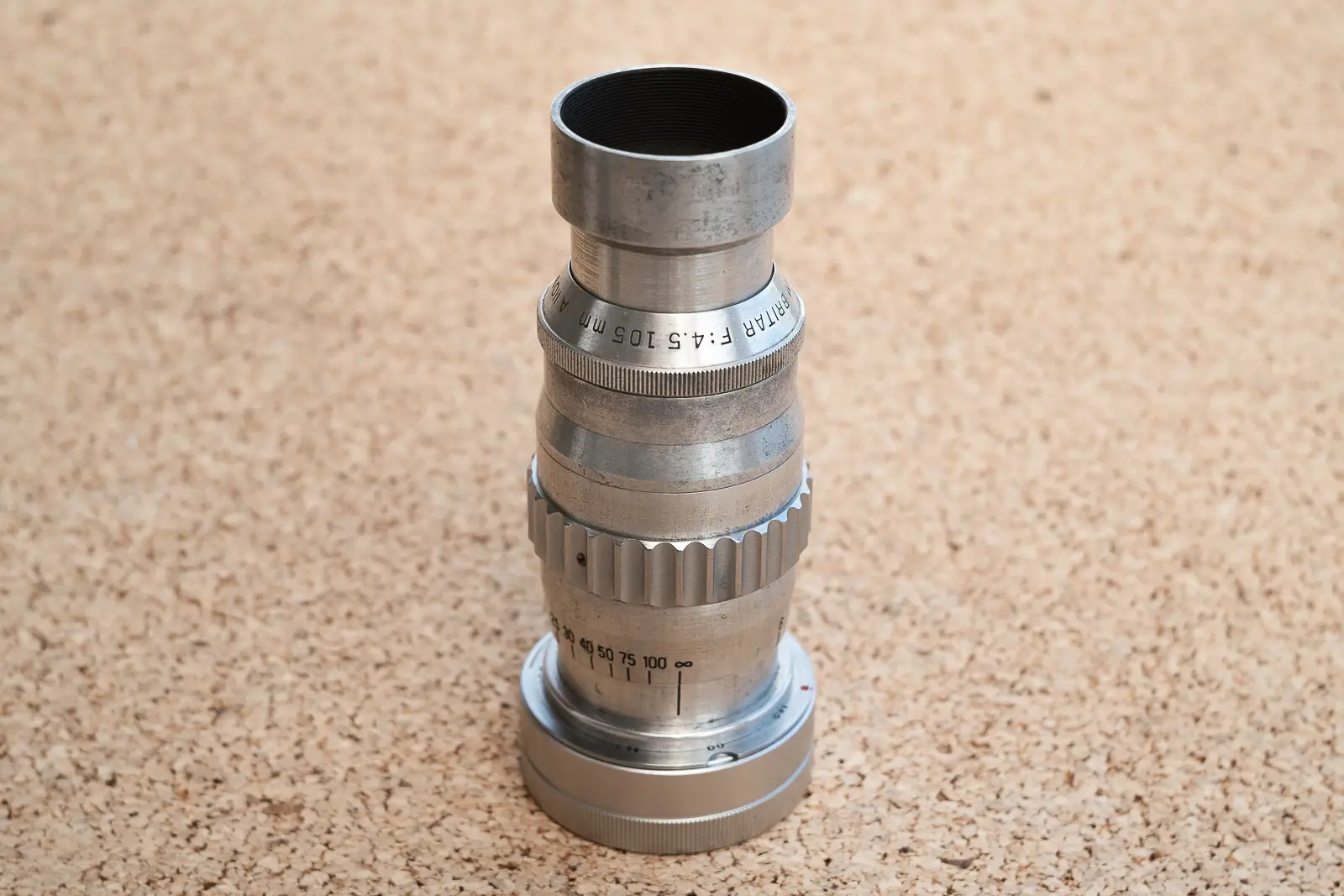
The aperture has 13 slightly curved blades. It stops at full-stop intervals to a minimum opening of f/22. It makes a very subtle click at the intermediate apertures but not at f/4.5 or f/22. The knurled aperture ring is a good size, is comfortable to grasp, and features easy to read aperture value markings.
The lens has an impressive focus throw of over 300°. It allows for very precise focusing but also is a bit annoying when needing to change focus from one end to the other, especially since it’s a bit stiff on my copy. The focus ring is very chunky and eye-catching. It’s very easy to find without looking. The focus scale is in feet only and is large and legible. It doesn’t feature depth of field markings or an infra-red dot. A shortcoming of this lens is it only focuses down to just under 6ft.
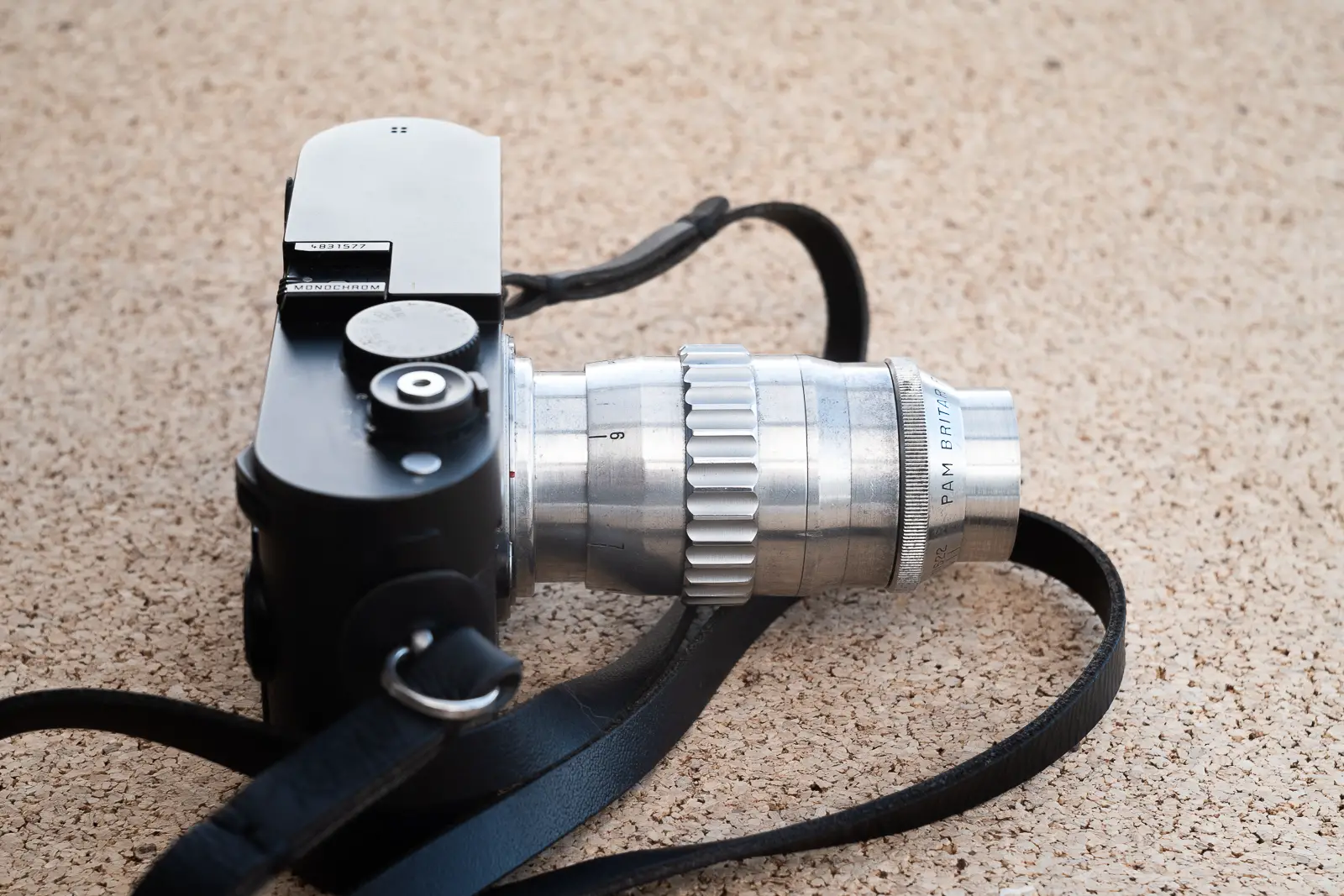
The Britar is rangefinder-coupled and is compatible with all LTM cameras. It will also work with M-mount bodies via a simple LTM to M adapter. I use one that triggers the 90mm framelines. The lens is not equipped with an infinity lock. The rings don’t turn independently from each other and focusing makes the entire barrel of the lens rotate, including the mouth of the lens which will make using graduated filters and polarisers tricky.
Filters and hood
The use of accessories is probably the area where PAM’s lack of experience in making lenses shows the most. One of the things I love about vintage lenses is many of them will turn out to fit filters and hoods I already acquired in the past. Canon hoods are a perfect fit for my Chiyoko 11cm and the Thambar. Leitz A36 filters fit 10 of the lenses I own from multiple different manufacturers. Canon 48mm filters not only fit a few Canon lenses but the aforementioned Thambar and the Nikkor 8.5cm f/2 as well.
I may have an entire drawer full of over a hundred filters but none of them fit the Britar. The closest match is my set of 30.5mm Sigma filters I used to use on the Rollei 35S. They are still ever so slightly too small so guessing the lens’ size is most probably 31mm. But that’s ok, my Mountain Elmar doesn’t have a filter thread at all but its hood is perfect for using A36 clamp-on accessories. But not the Britar! The hood’s outer diameter is rather annoyingly about 38mm. Probably just about a millimetre too large.
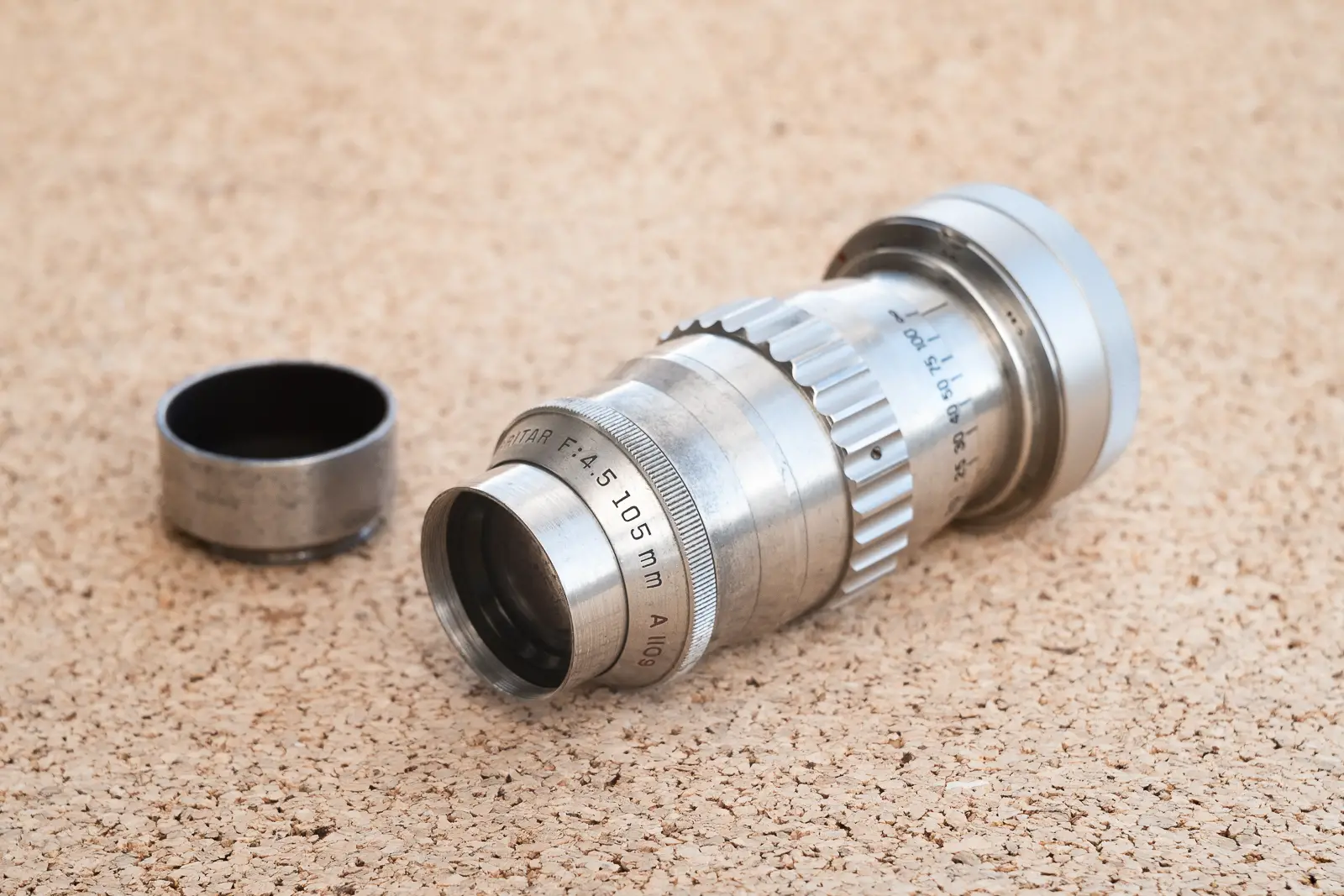
In recent months I discovered the Kodak Series filters and adapters and due to the lack of other options I decided to look for an adapter that will allow me to mount Series VI filters onto the Britar’s hood. Over on Ebay a UK seller had a 38mm Kodak push-on adapter in a pretty poor shape (most of the adjustable leaves have been broken off) but it was mounted on a curious-looking Agfa ring. I bought this contraption for the Kodak ring but actually the whole thing was exactly what I needed.
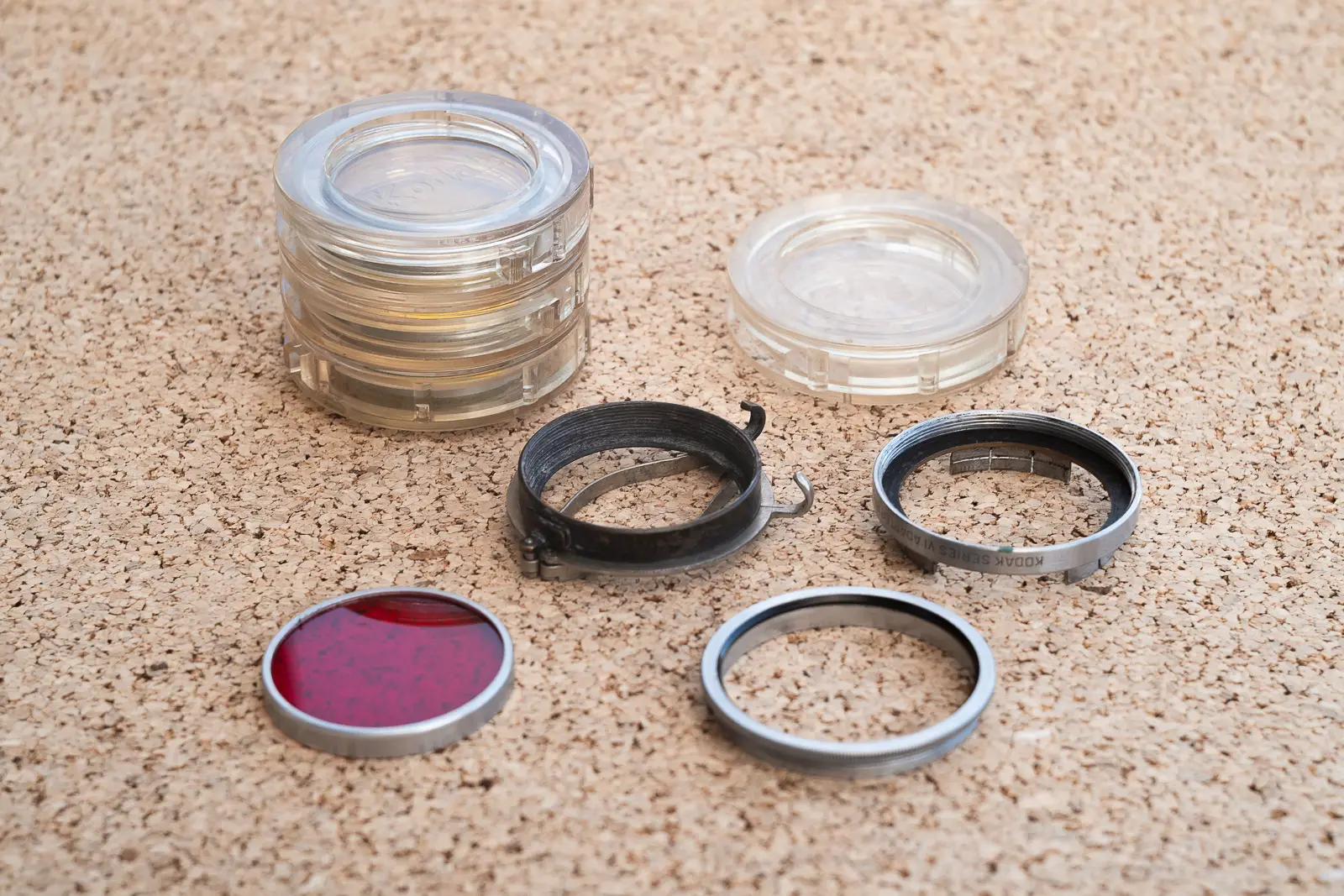
The Agfa adapter (I’m sure it has a name, I was unable to find out what it is) has two curved metal strips that open when you pinch the two bits that stick out on the side and then clamp down on a lens barrel or hood. It is a perfect fit for the 38mm hood of the PAM Britar, much better than the slip-on Kodak adapter would have been on its own as it would have required some extra gorilla tape to make it have a snug enough fit. The adapter clamps down very firmly and the Kodak ring pushed into it allows you to mount a Series VI filter. Victory!
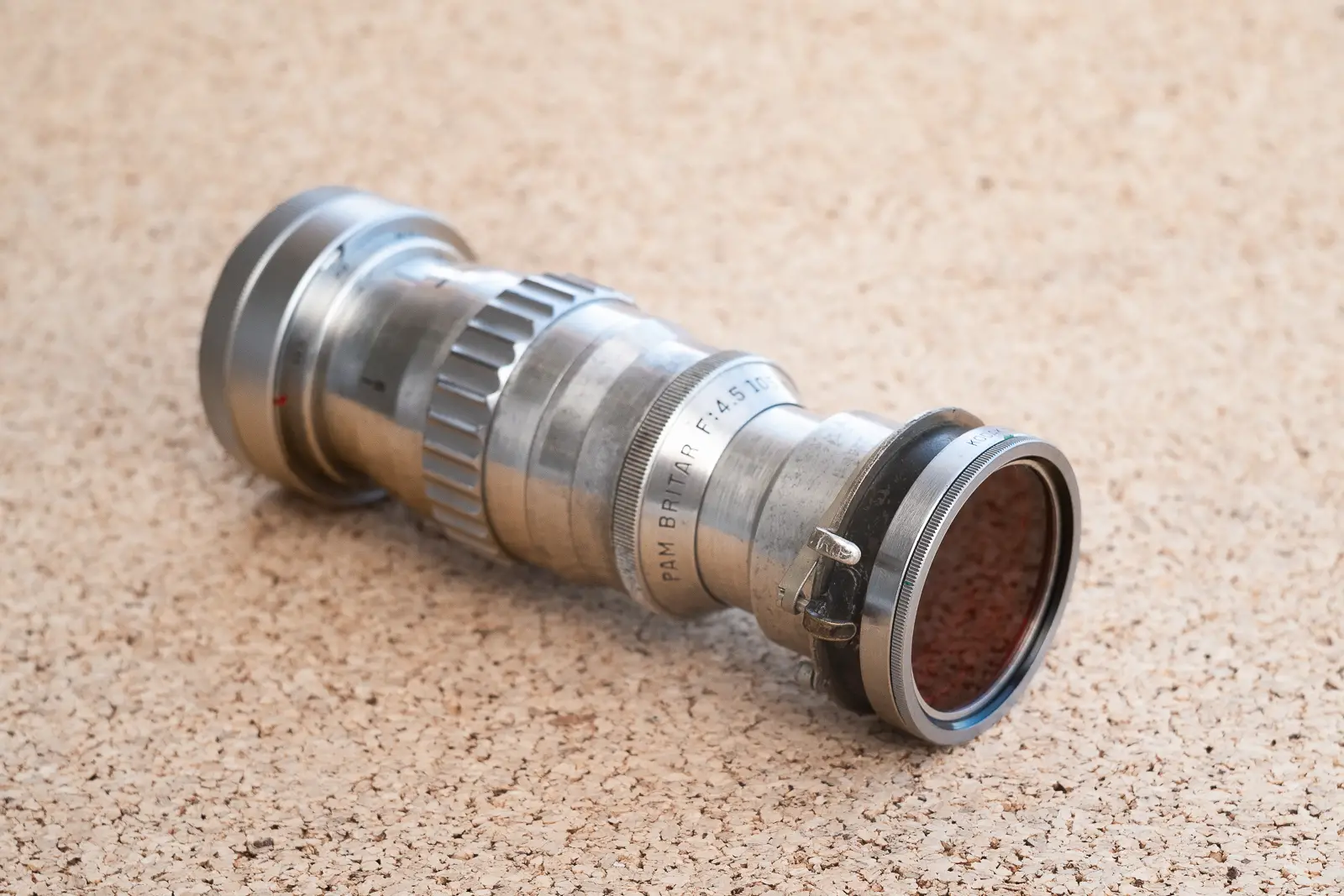
Image quality
The lens arrived right before I was about to spend a long weekend on a canal boat in Gloucestershire. I was going to pack light and decided to bring a 50mm lens and a 28mm in case I encountered some interesting architecture. For a longer option I would have probably opted for the Elmar 9cm or the Chiyoko 11cm but decided to risk it and brought the untested PAM Britar with me. The camera I brought along was the Leica SL, a safer choice than a rangefinder in case the Britar proved to be problematic.
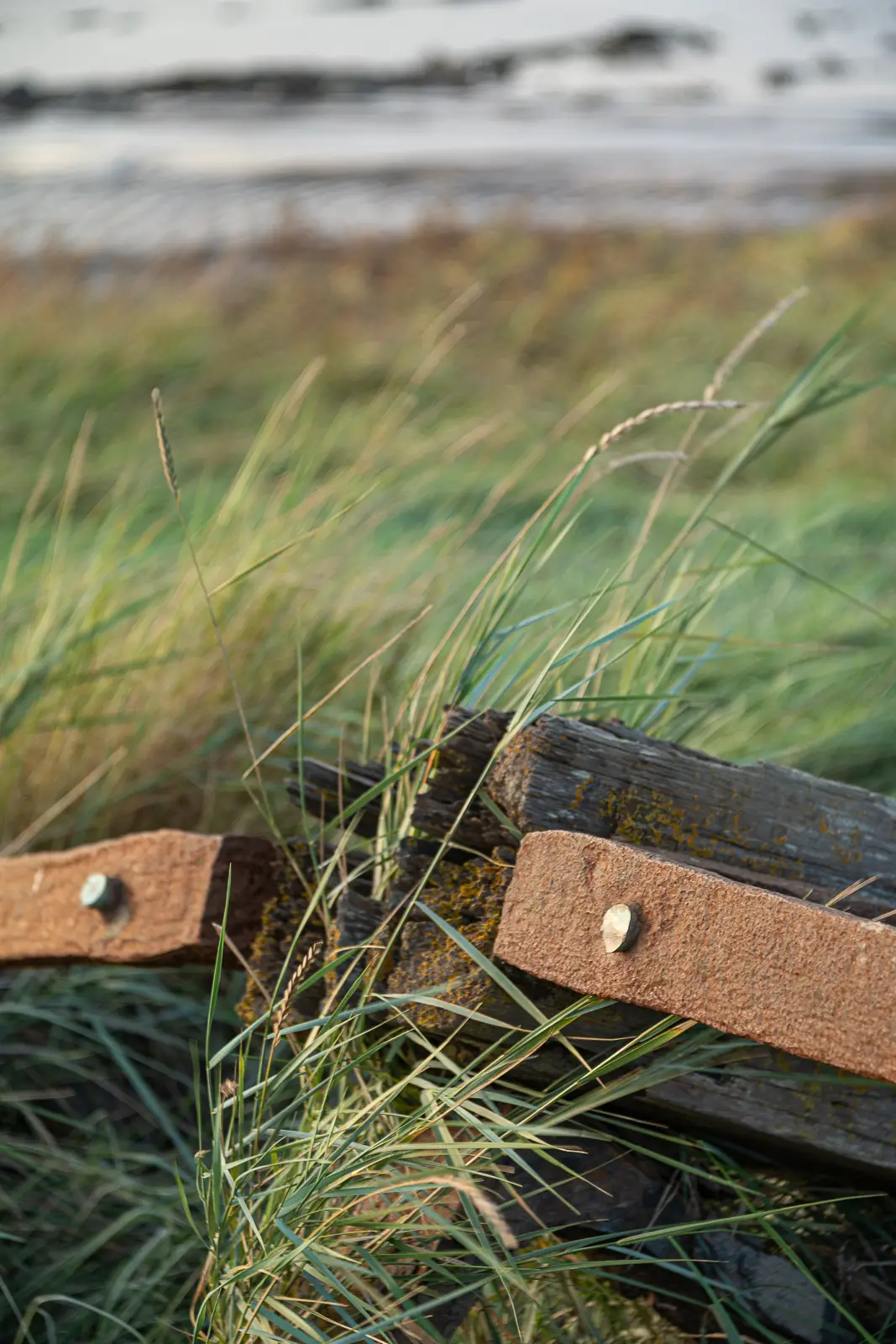
A detail from Purton Hulks Ships’ Graveyard, Gloucestershire
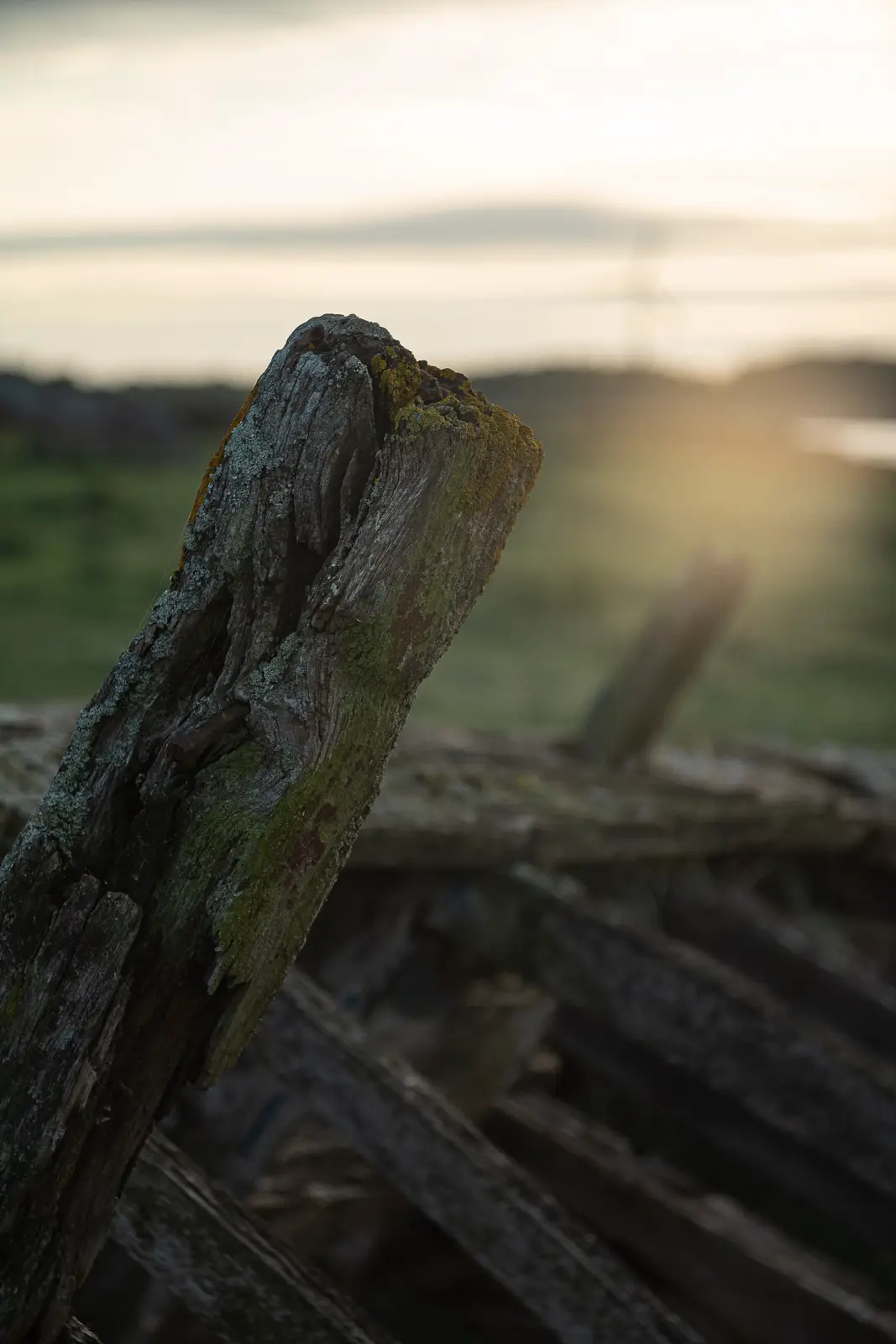
Another detail from Purton Hulks Ships’ Graveyard, Gloucestershire demonstrating the flare caused by a chip in the front element
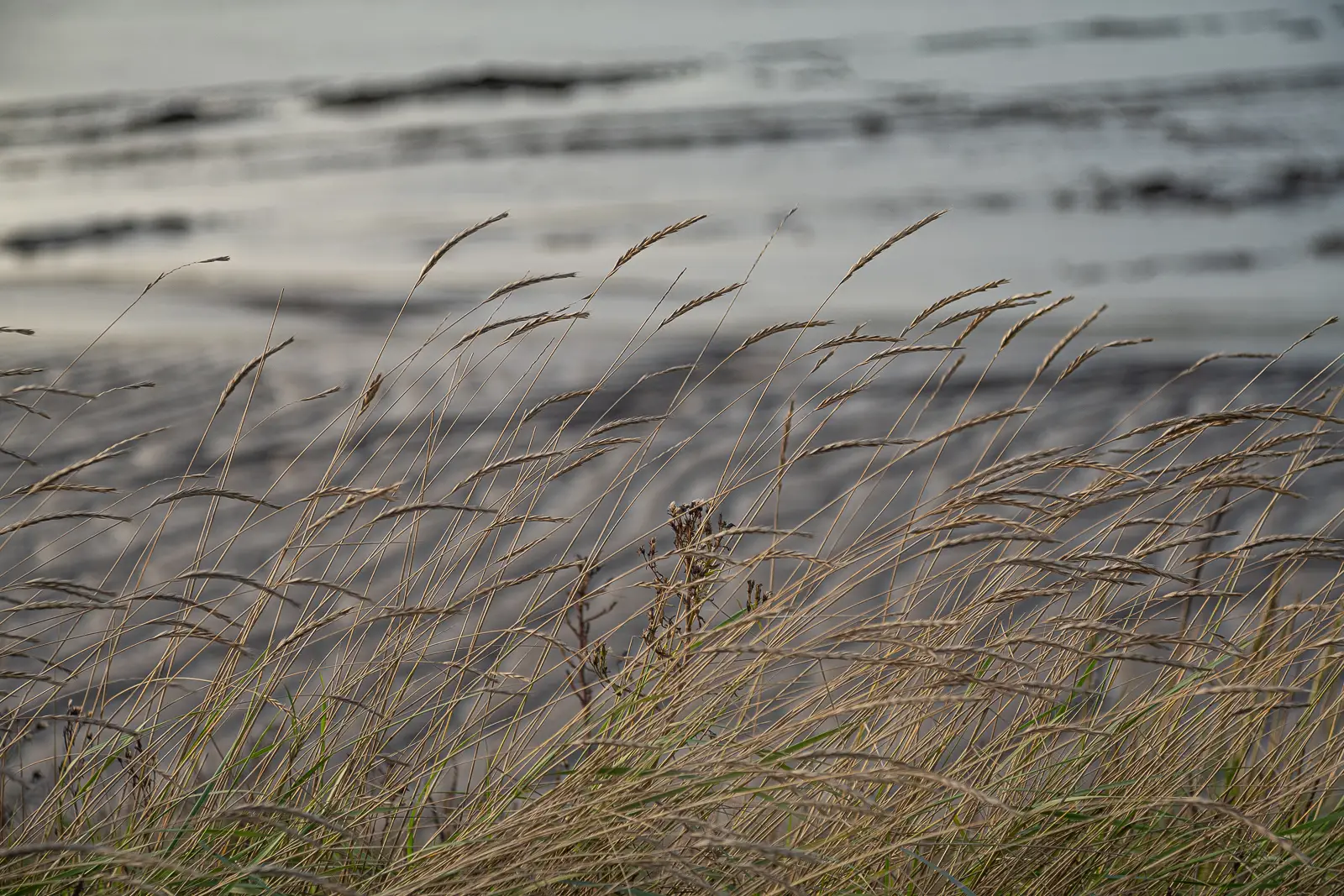
The shore of the River Severn
Even in a top-notch EVF it’s always tricky to assess how good a lens is optically but my impressions were confirmed once I got home and opened the photos in Lightroom. The image quality of the PAM Britar 105mm f/4.5 is fantastic. Forget about it being a triplet and a budget lens from a company with little experience in making camera lenses. This lens is every bit as good as the 9cm and 10.5cm Leitz Elmars, with better contrast. I kept the aperture open and shot nature as well as architecture with it. At no point during the weekend did I wish I brought another lens with me and actually about 60% of all the keepers from the trip I put on my Flickr were taken with it.
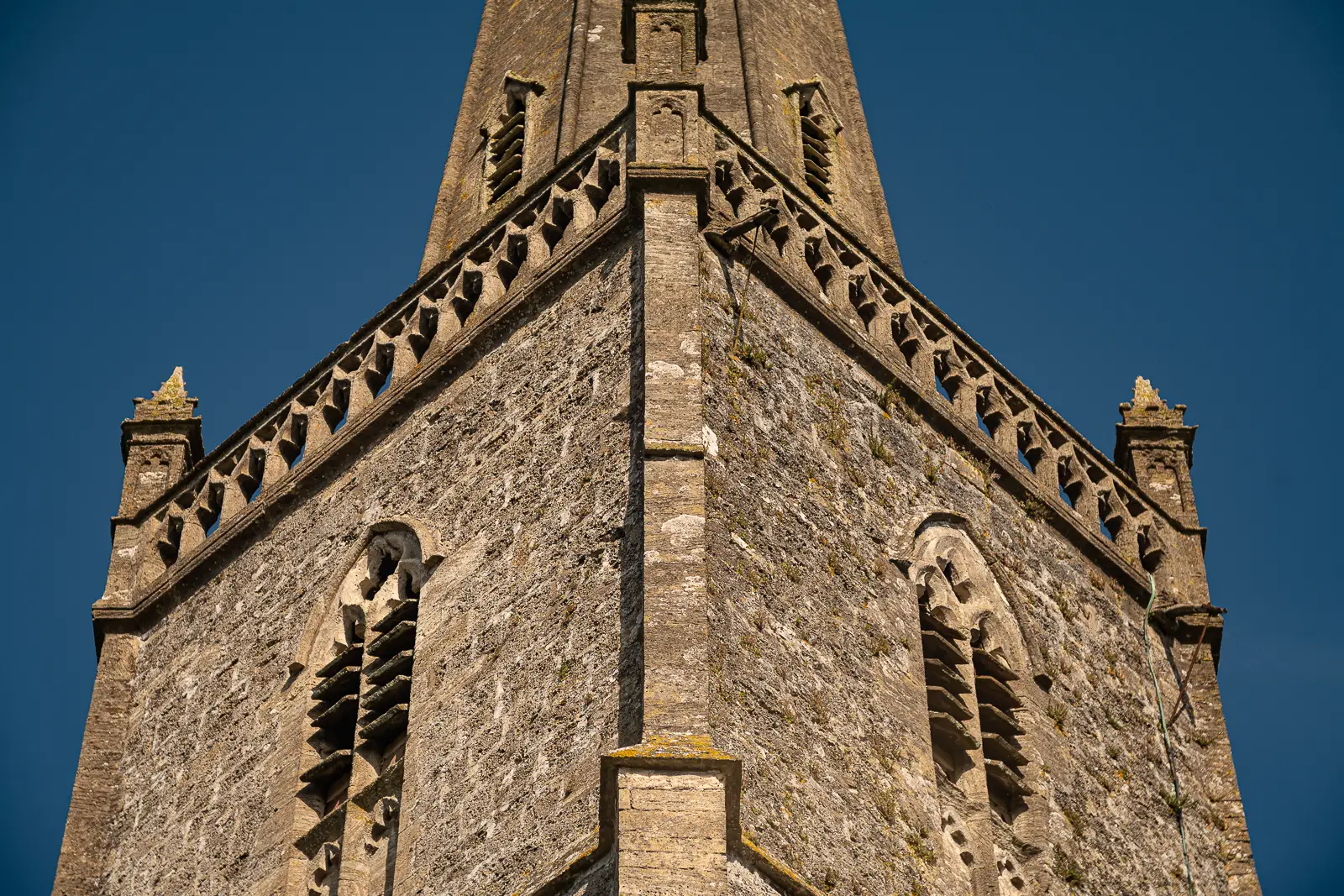
St John the Evangelist Church, Slimbridge, Gloucestershire
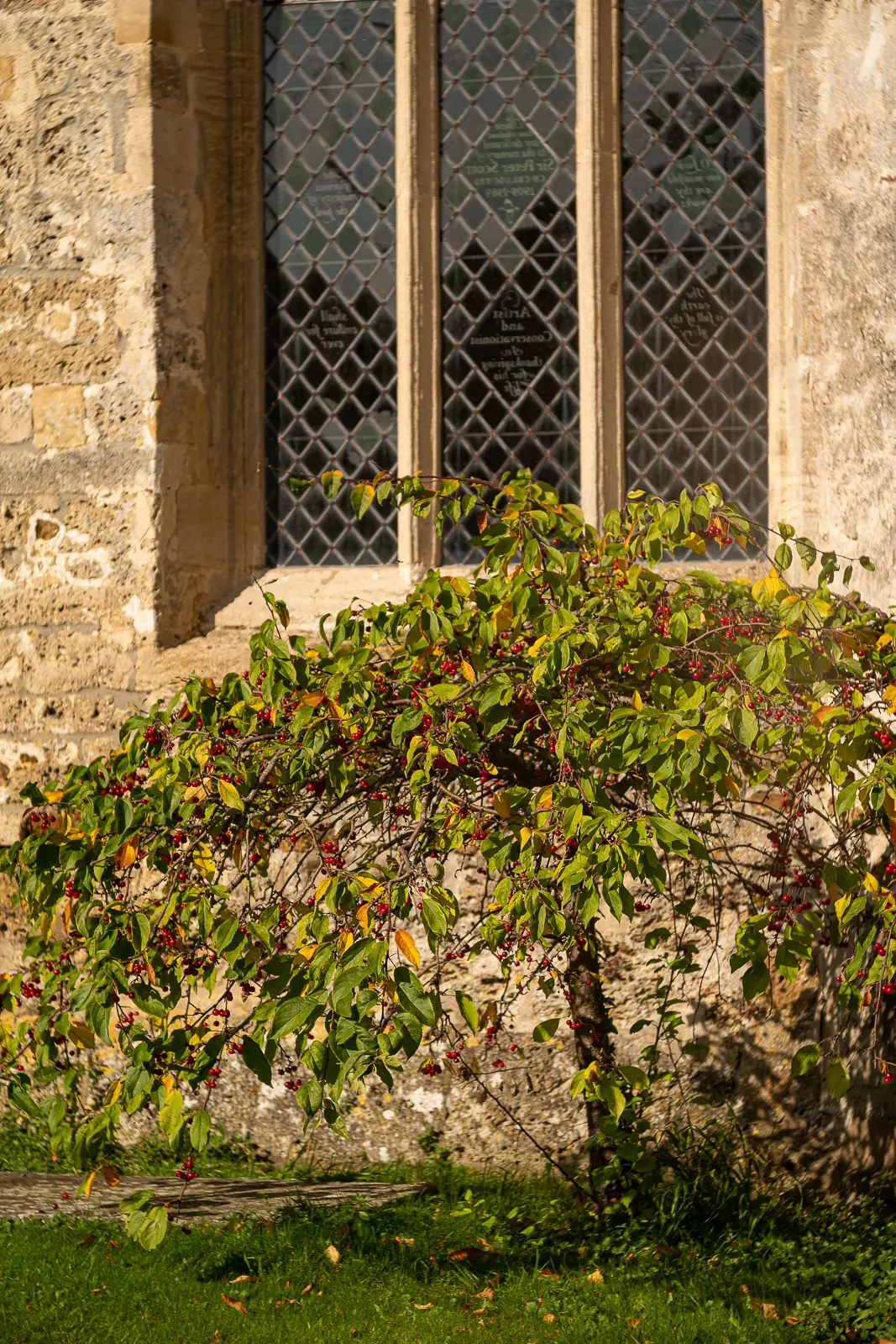
St John the Evangelist Church, Slimbridge, Gloucestershire
Sharpness in the centre of the image is excellent. There’s a degree of degradation towards the edges but it’s only really noticeable in the corners. It performs consistently well at minimum focusing distance, around infinity, and at intermediate distances. The transition between areas in and out of focus is very smooth and images turn out looking three-dimensional. It’s a shame about the rather large minimum focus distance, I often found myself wanting to approach closer in order to achieve a shallower depth of field.
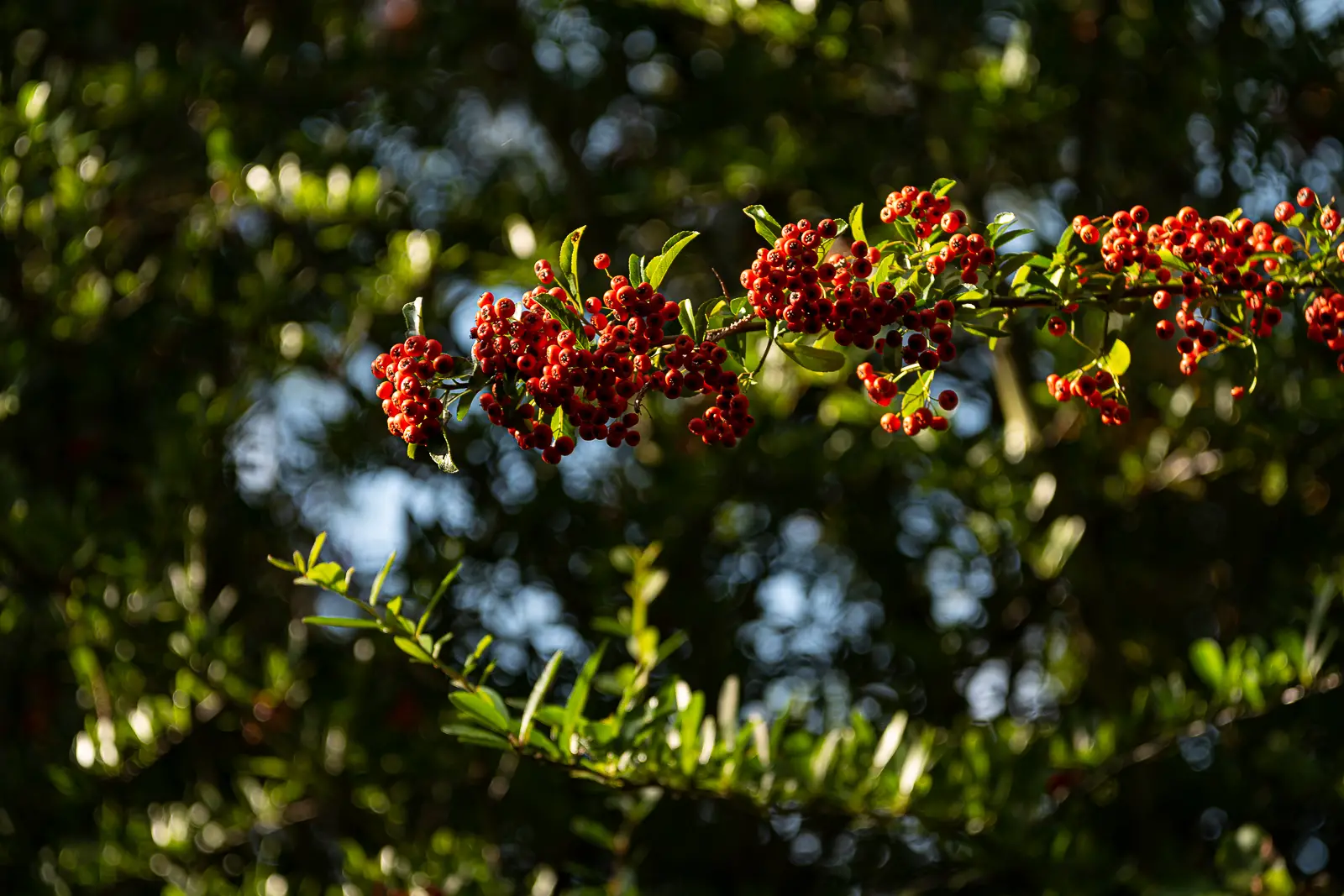
Interesting bokeh and sharpness wide open
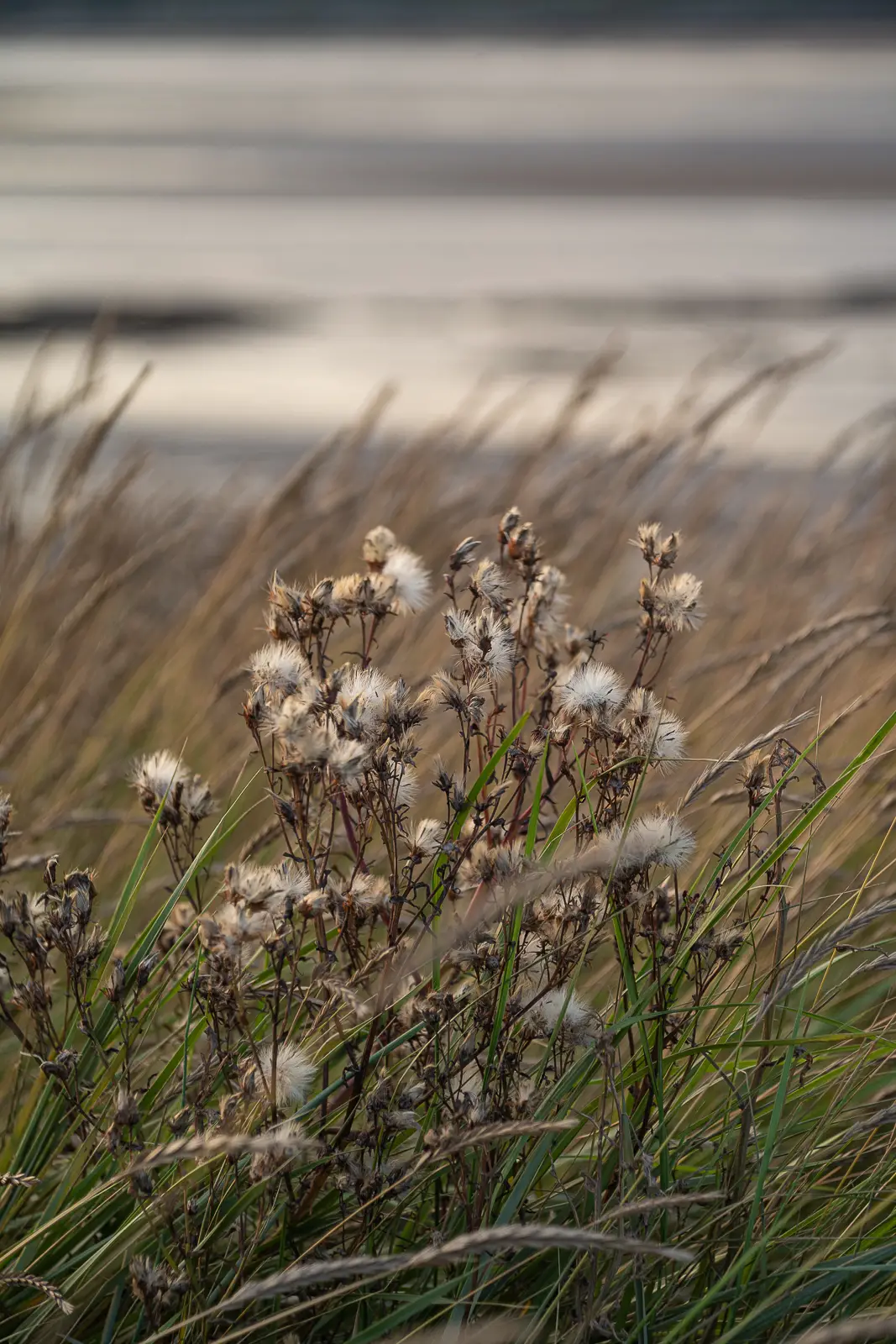
Smooth velvety transitions from in to out of focus
Under the right circumstances the bokeh is quite bubbly, which is typical for triplets. There isn’t much swirl other than a bit in the corners. In other situations the bokeh is quite smooth and not very distracting. It’s got a velvety quality. Due to its relatively small maximum aperture, it offers a good balance of separating the subject from its surroundings without completely obliterating the detail in the background.
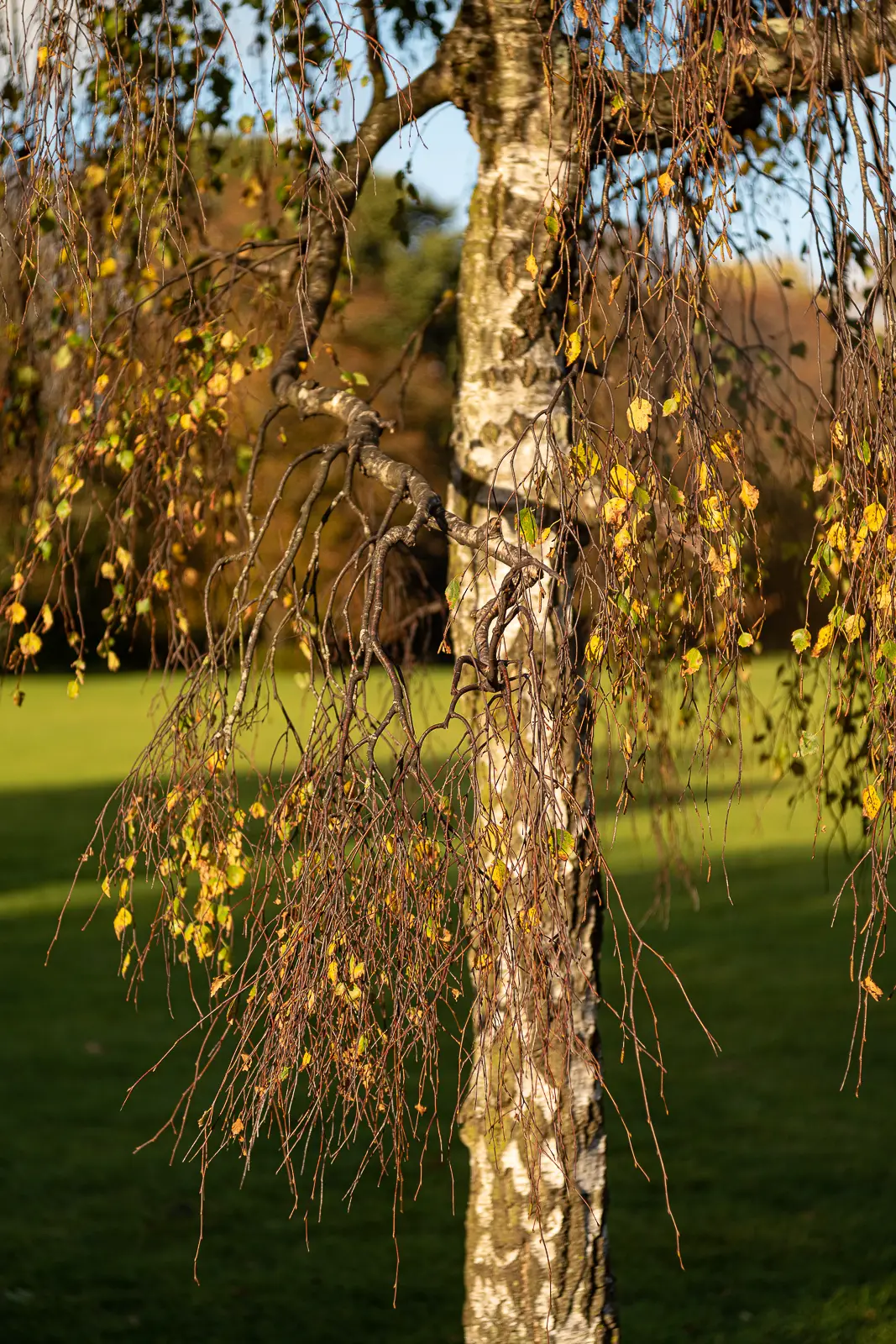
Subject separation despite small aperture and long minimum focus distance
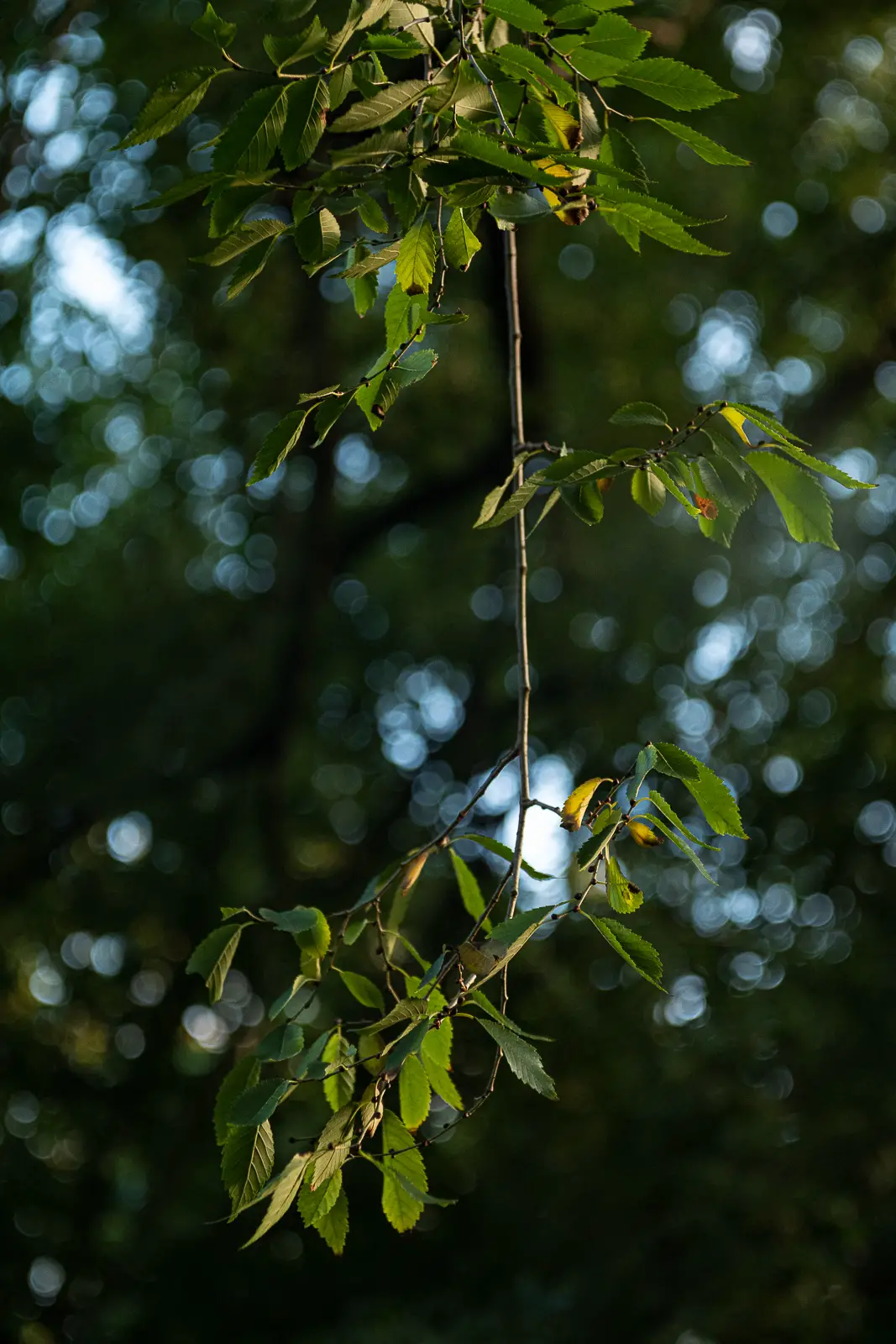
Buble bokeh typical for triplet lenses
It’s not very flare-resistant, it’s a good idea to always have the hood on even if it’s a bit shallow for this focal length. I kept getting a flare always in the same area of the image. Upon inspection I discovered a small chip in the front element. I don’t really know what to do about it. Fill it with something clear, use a black sharpie, or leave it as-is? It works quite well in some photos, in others not so much. It appears to not affect sharpness in any way so I’m a bit wary whether I should do anything about it.
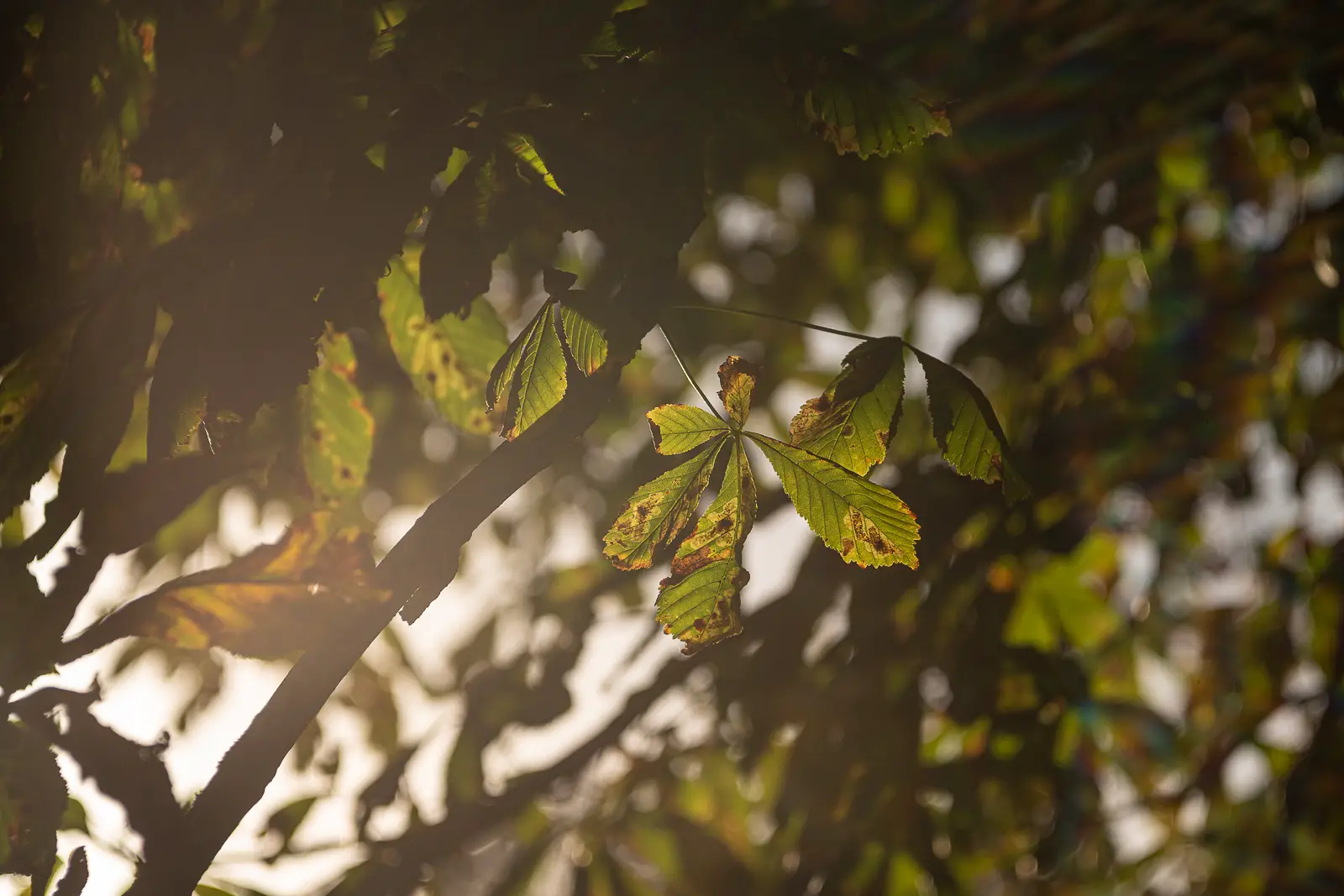
Veiling and flare when shooting against the light
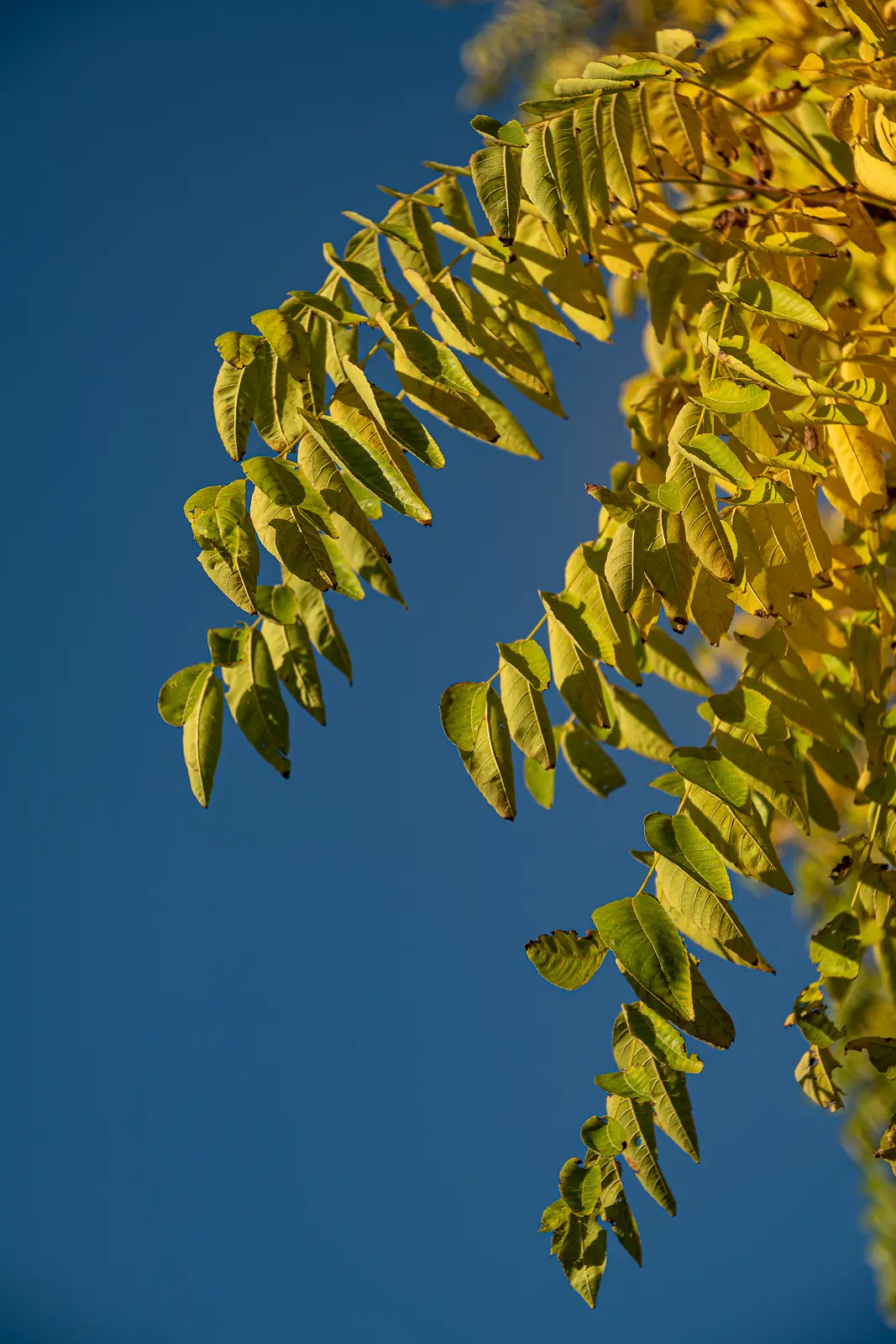
Vigneting shouldn’t be a problem and mostly occurs in the corners
Contrast of this lens I’d describe as medium. The images only need a little adjusting to pop. Colours come out rich and natural, I’ve enjoyed using it to capture yellow foliage and various red berries. I’m still keeping my SL’s white balance set to shade. It works well in the evenings and brings out the autumn tones. Vignetting isn’t an issue and even wide open mostly occurs in the corners.
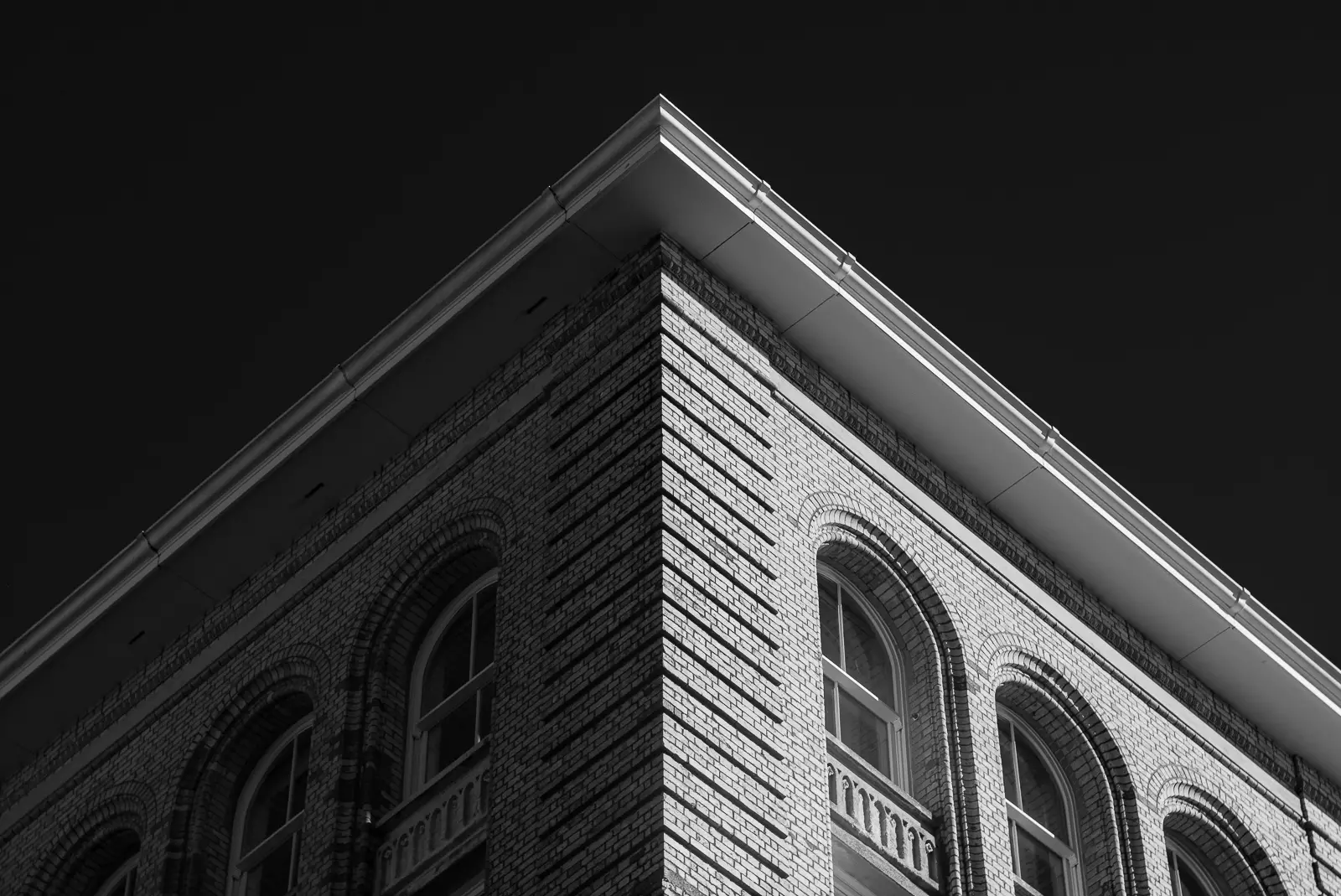
Very good sharpness throughout the image and perfectly straight lines
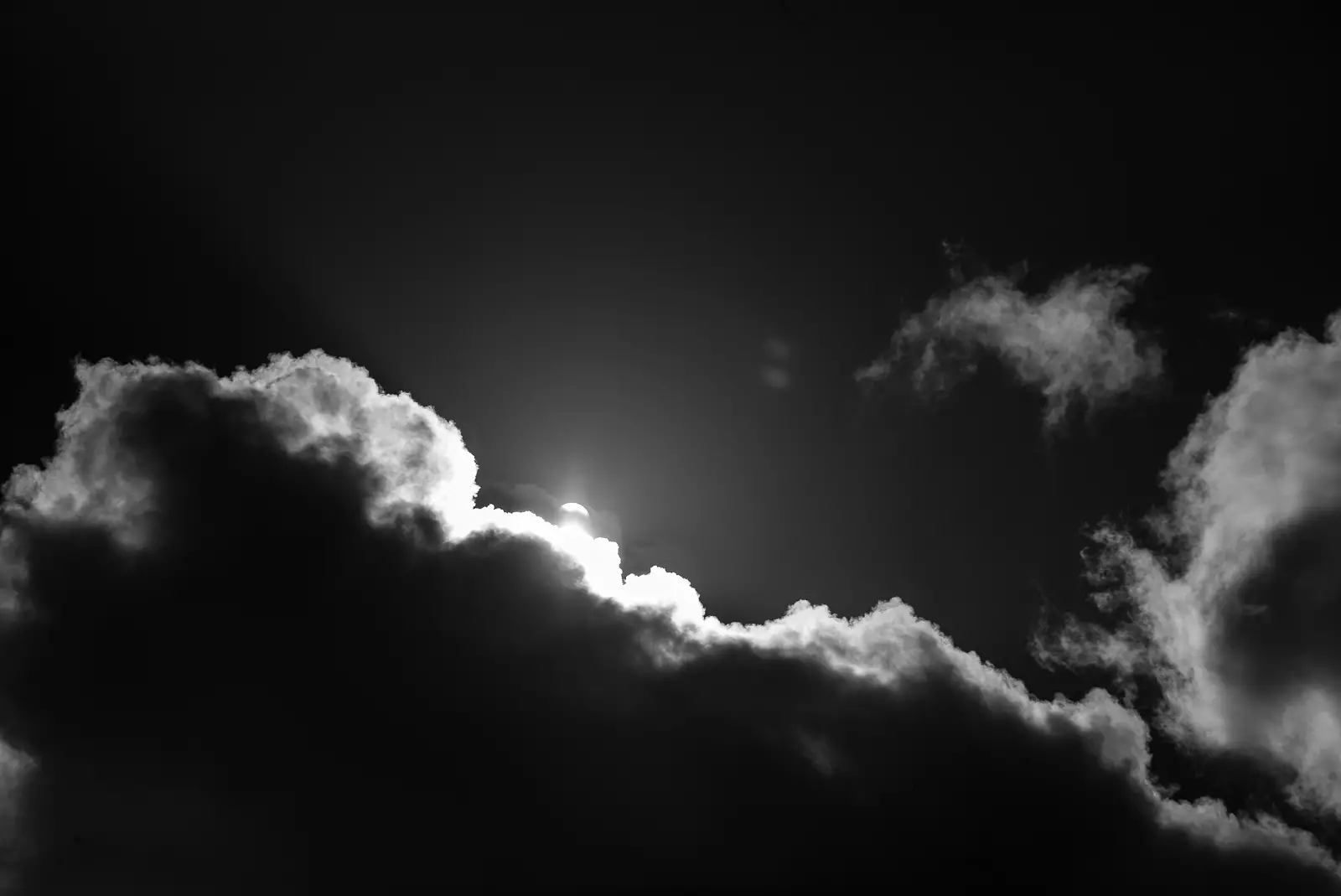
Deep contrast when using a red filter
Once I had the filters sorted I decided to take it for a spin mounted on the Monochrom with a red filter. Visited some of my favourite places for this sort of thing, such as Clifton Hill in Brighton, as well as ventured out to Hove to see some spots I haven’t seen in years. The weather has been very spotty but I was lucky enough to get a whole weekend of sun. My favourite kind of light for black and white happens in autumn, winter, and early spring provided it’s sunny. In the summer the light is too overwhelming and too scattered. You don’t get the same deep dark skies, long shadows, and stark contrasts.
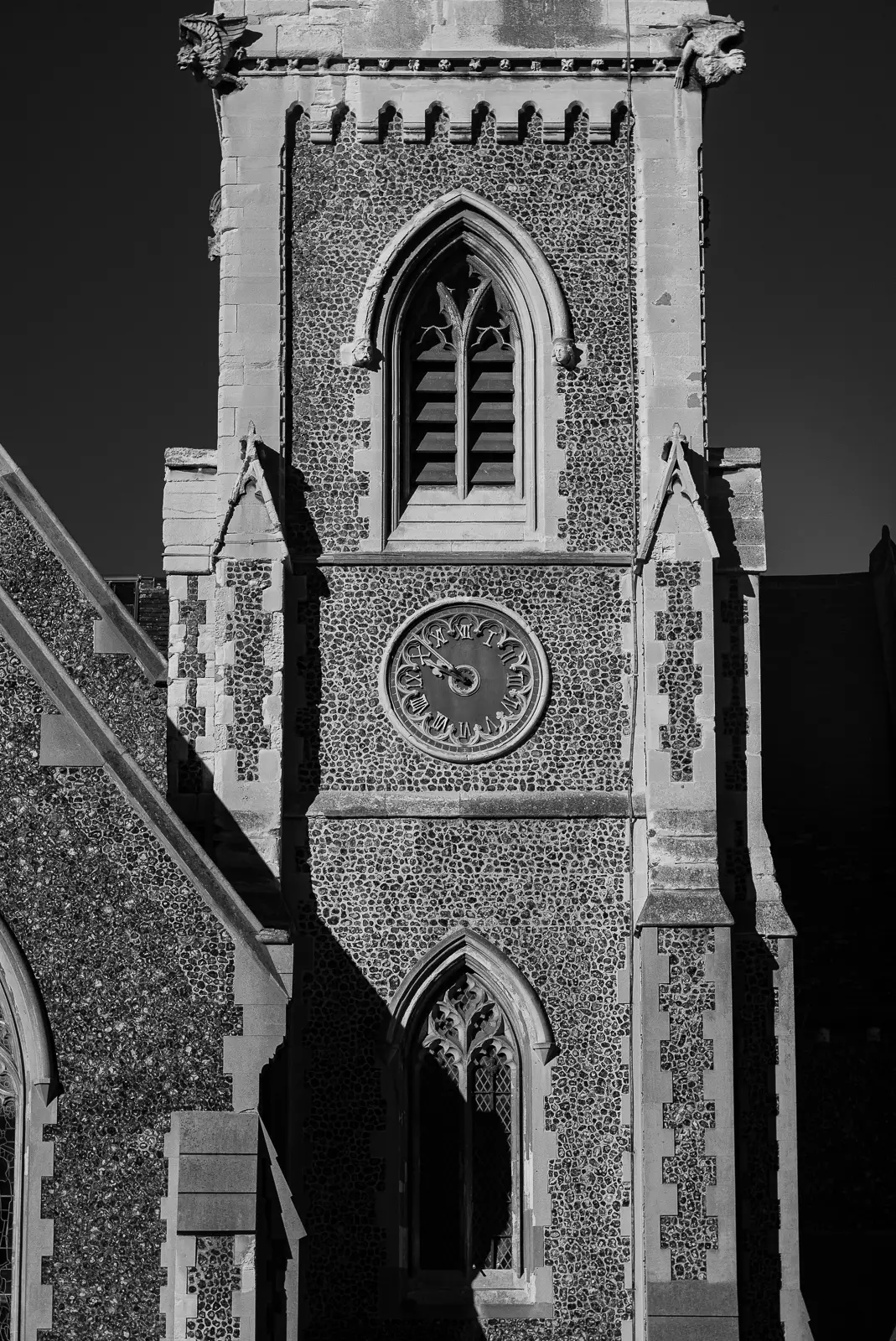
Lots of detail in this image of St John the Baptist’s Church in Hove
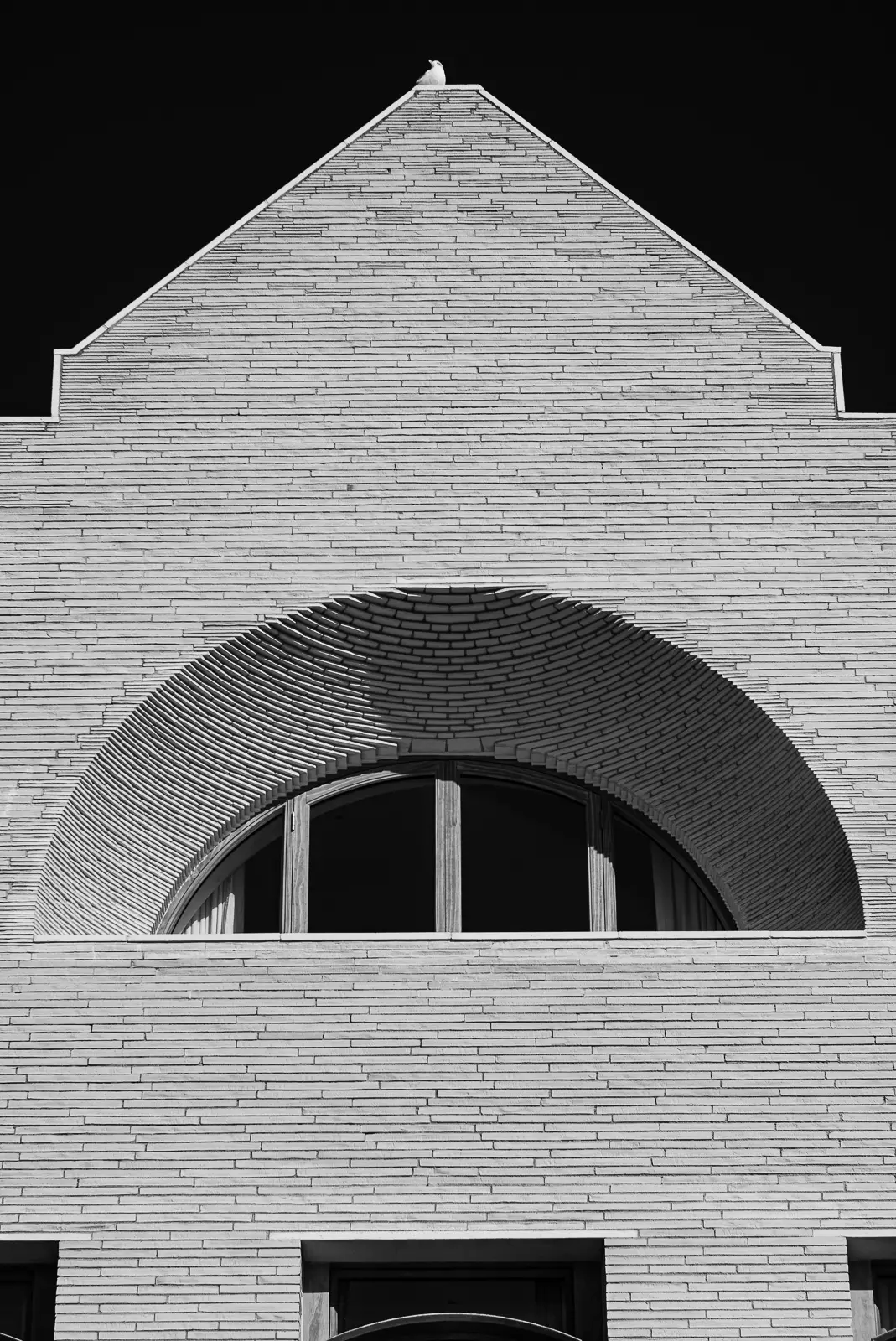
David Gilmour’s soon to be former residence on the Hove seafront
This time I stopped the lens down to f/8 in order to get the most out of the intricate architectural detail around here. And once again the lens didn’t disappoint. The amount of contrast the lens is capable of is perfect for use with a red filter. It allows the highlights to shine and the shadows to not clip even if they’re very deep. The images turned out crisp and full of detail. One of the things that impressed me the most was how little distortion there was. I corrected some of the images in Lightroom to make slightly converging lines parallel and that’s where any small amount of distortion becomes a lot more pronounced. I didn’t notice any issues on this front. This is a great lens for architecture if you enjoy telephotos for this purpose.
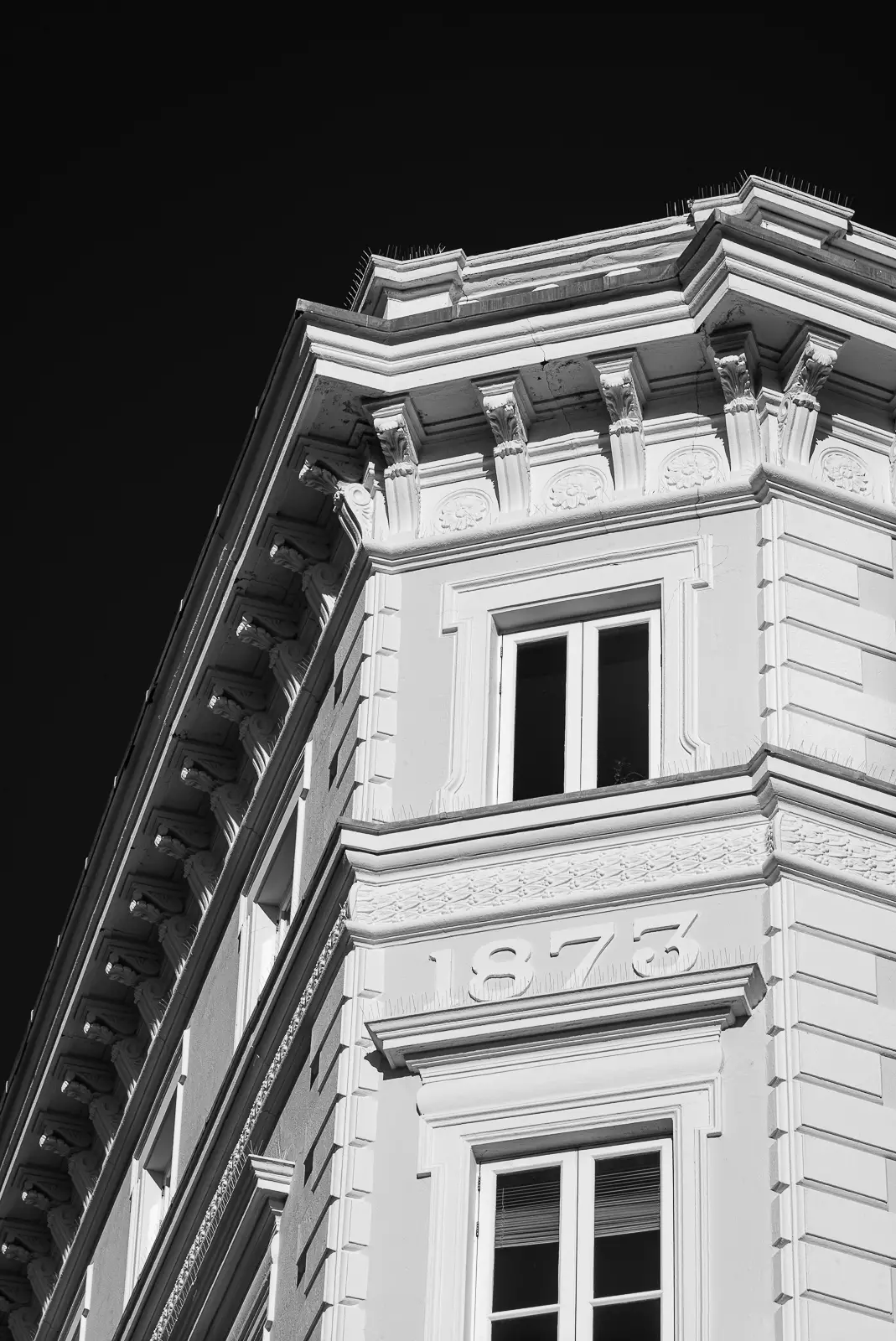
Perfect weather for black and white with the red filter
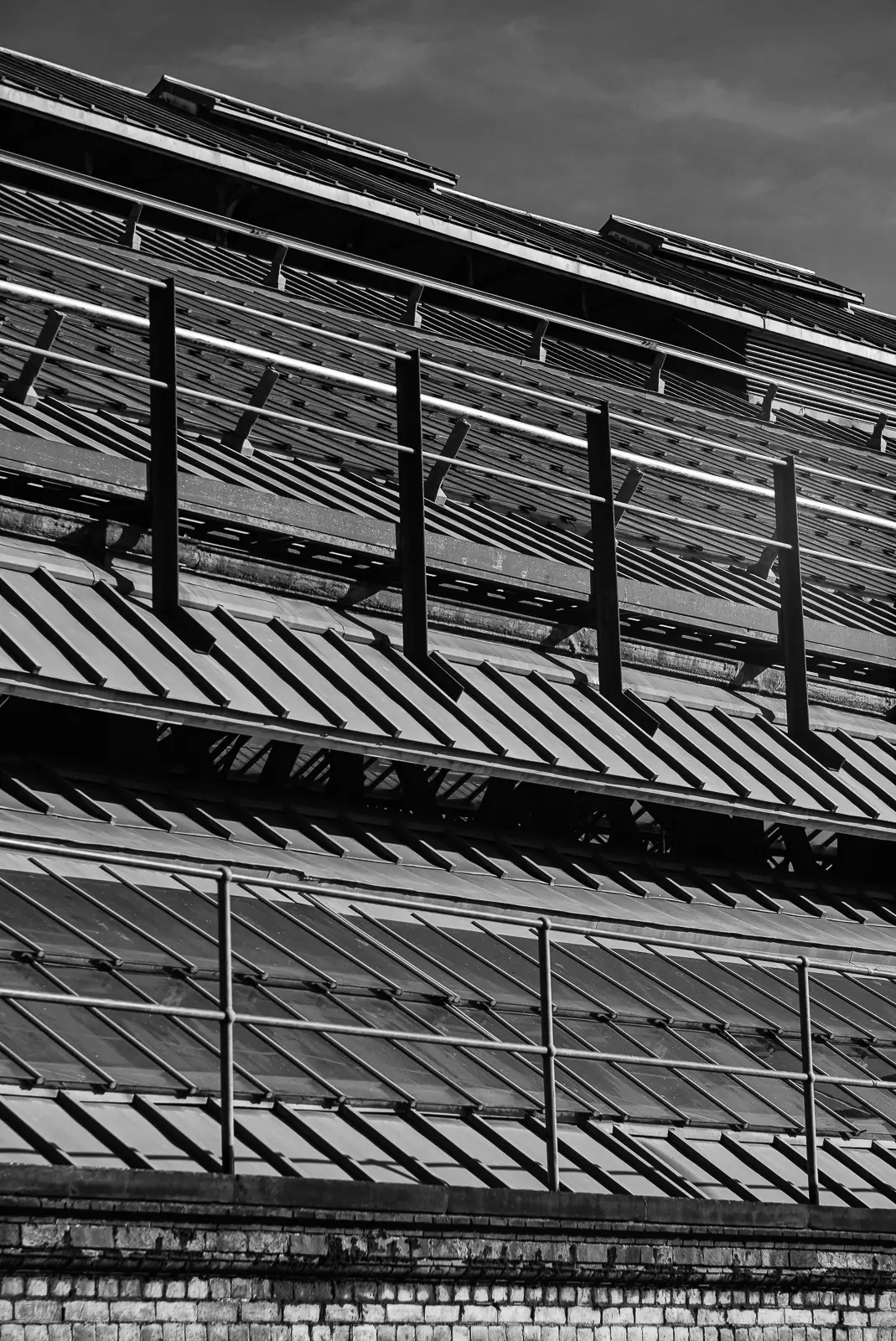
Texture and details of the exterior of the Brighton train station
Final thoughts
As far as buying a lens blind, this was definitely a win. I’ve always been drawn to longer lenses as they make it so much easier to avoid visual pollution. The PAM Britar 105mm f/4.5 is such a great piece of kit. Inexpensive, well made, and so fun to shoot with. I’d even go so far as to say this might be my favourite ~105mm lens in my collection. I am very fond of the Mountain Elmar, and the Nikkor 10.5cm f/2.5 is such a beast and basically the perfect lens… But there’s something about the Britar and how unpretentious it is. Next time I go out shooting I will consider using another lens but I might very well make it this one again.
You can check out more shots taken with the PAM Britar 105mm f/4.5 on my Flickr where I meticulously arrange all my images into albums for each vintage lens I use.
Share this post:
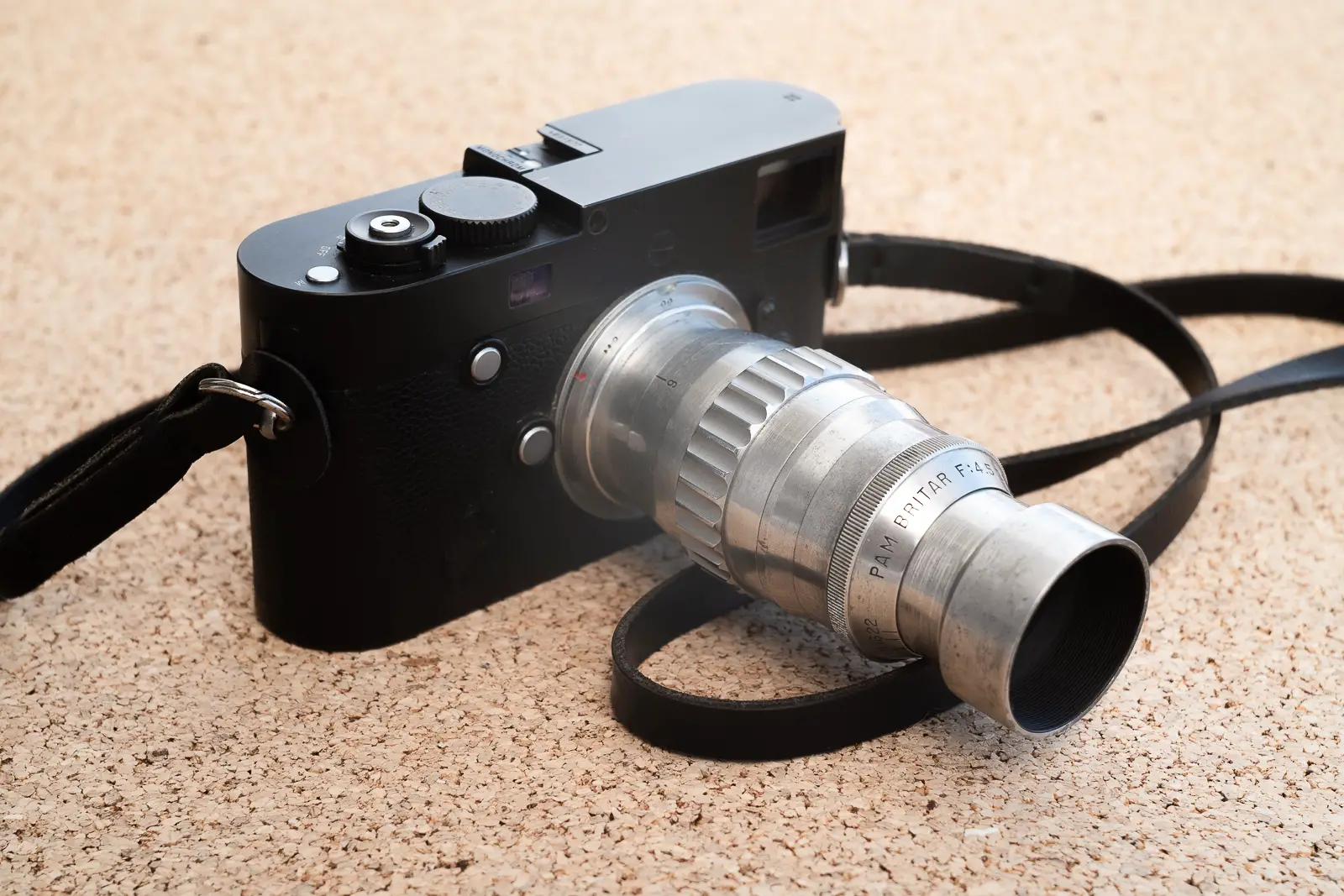



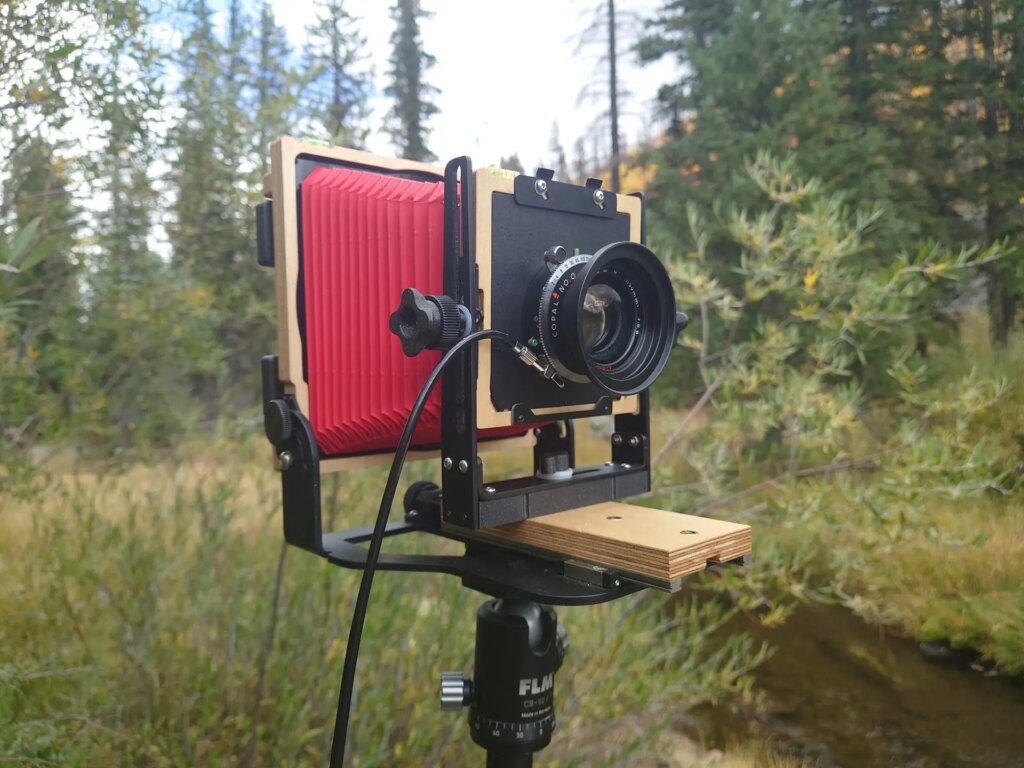




Comments
Louis A. Sousa on PAM Britar 105mm f/4.5 – An American Triplet Review
Comment posted: 18/12/2023
Huss on PAM Britar 105mm f/4.5 – An American Triplet Review
Comment posted: 18/12/2023
I recently bought the TTArtisans 100mm 2.8 Trioplan version in Leica M mount. As a heads up - it suffers from hard vignetting at all apertures which is not correctable unless you crop the image.
This only happens with the Leica M mount version - must have something to do w the rf coupling mount.
Comment posted: 18/12/2023
Karen McBride on PAM Britar 105mm f/4.5 – An American Triplet Review
Comment posted: 18/12/2023
You ca put a M to L close focus adapter on your SL and the 6’ won’t be as much of a hindrance. Mine is almost always on my SL. I also buy only M adapters for all my vintage lenses. This has the addition advantage of moving to a new camera system and only replacing the close focus adapter to make all your adapted lenses usable again.
Comment posted: 18/12/2023
Tony Warren on PAM Britar 105mm f/4.5 – An American Triplet Review
Comment posted: 19/12/2023
The chip you mention can be touched in with a spot of matt black, an old solution to the problem. Has no effect , rather like a spot of dust really.